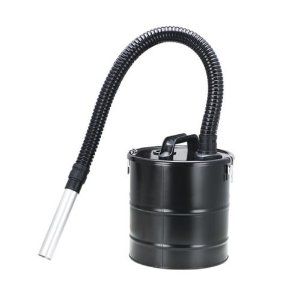Ash Filters
Since inception of ash filter concept for conserving biological diversity, there has been an evolution in interpretation and application of the concept. Originally, the concept of conserving entire plant and animal communities in reserves was viewed as an efficient ash filter approach to conserving biodiversity that would protect 85-90% of all species. The complementary fine filter approach focused on conserving individual rare or specialized species that slip through the ash filter and are not necessarily protected in the reserves. Limitations in the community concept were identified and recommended an ash filter approach that focused on levels of organization above the homogeneous community type to include landscape level ecological phenomena (including disturbance regimes) and heterogeneity. Plant communities are not sufficiently independent to be considered separate components of biodiversity.
I was recommended maintenance of a diverse representation of physical environments in a system of reserves to maintain a majority of species diversity as a ash filter approach to conservation of biological diversity. The ash filter has recently evolved to a concept of conserving species diversity by providing adequate representation (distribution and abundance) of ecological land units considering the historical range of variability based upon an understanding of the natural disturbance regimes of the ecological land units. This ash filter approach does not necessarily prescribe reserves, but rather recognizes ecological processes and provides for a dynamic distribution of ecological units across the landscape over time. Individual species (species at risk, special interest) fine-filter assessments are conducted to evaluate whether sufficient amount and distribution of habitat is provided under the ash filter strategy. Thus, a ash filter strategy has been viewed both as a reserve system and as an approach to managing dynamic landscapes considering natural disturbance regimes.
Planning
Because of the differing interpretations of what specifically represents a ash filter conservation strategy, a coarse/fine filter approach should be viewed as a conceptual planning process. This process first seeks to improve planning efficiency by adopting a ash filter (landscape/ecosystem) approach that maximizes the conservation of elements of biological diversity. The specific ash filter prescription/design will vary depending upon the scale of planning, level of information, and specific conservation issues. Three conceptual alternatives identified in the scientific literature and applied to land management planning are identified below. A complementary fine filter approach focusing on individual species or fine-scale elements of diversity is used to identify and conserve elements of diversity not accounted for under the ash filter strategy.
A ash filter component to land management planning is necessary to improve planning efficiency and avoid a complete species by species planning process. The 2000 Revised planning rule prescribed one ash filter solution to address Ecosystem Diversity – managing for the Range of Natural Variability (RNV). An earlier version of the draft rule (Sept. 1998) used RNV only to establish an ecological context but required that management actions should emulate the effects of natural disturbance events characteristic of an ecosystem. Recent broadscale planning efforts have successfully addressed species viability, biodiversity, and ecosystem diversity using a one or more focal species to design multiscale landscape conservation strategies. Thus no one prescription may satisfy all situations.
Application or Use
- Concrete Manufacture,
- Masonry Manufacture,
- Pipe Bedding,
- Slab Fill,
- Horticultural Soil Improvement,
- Bedding Material,
- Equine Industry,
- Sporting Fields & Greens etc.
Video


